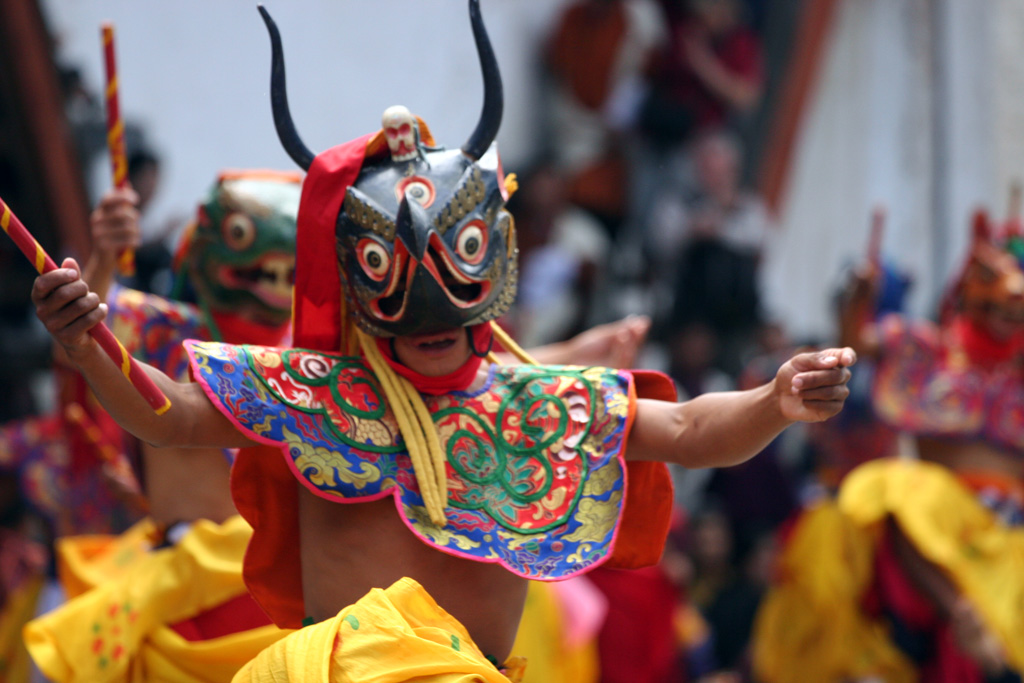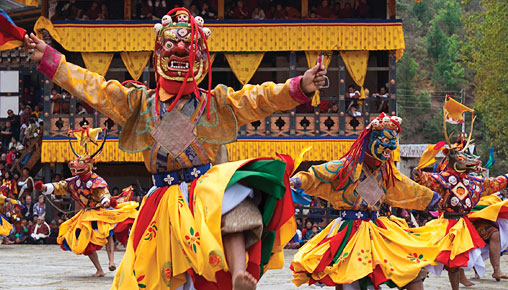Each year, the central valley of Bumthang witnesses a unique event of sorts. Hundreds of Bhutan’s nomadic highlanders bring together herders of the north eastern and north western Himalayan frontiers in celebration of their unique culture and traditions, giving visitors the ideal opportunity to peek into their authentic way of life.
Survival in the wilderness is hard. These nomads live under some of the harshest conditions closer to the snow capped mountains and it is interesting to see how they get by. The nomads of Bhutan depend on yaks for their livelihoods and therefore feature largely in their celebrations, traditions and customs. Although these communities are gradually entering the cash economy, they are still seen to be largely dependent on bartering practices. The ways of this people is simple and yet so vibrant that it never fails to fascinate.
When attending this festival, one gets to see how truly vast and unique Bhutan’s ethnic diversity is. The festival has participants from nomad tribes from the Ha, Paro, Wangdue, Bumthang, Trashiyangtse, Gasa and Thimphu districts, the Brokpas of the east and the Layaps of the west being the two major tribes. The grand procession of the Chipdrel, a ceremonial pageantry reserved for royalty is a must see event held during the get-together while it is also interesting to see some of the strongest and the most toughest highlanders demonstrate their skills in archery, wooden dart throwing known as khuru, soksum throwing (a light spear or javelin) and dego which is similar to horse shoe throwing but performed with rocks as well as engaging in Keyshey, traditional Bhutanese wrestling.
The Bhutan Nomad Festival is in fact a slice of their own life. Visitors are given the chance to enjoy a meal of typical nomad food sitting cross legged in a circle around a stone hearth with a nomadic family. Also witness the livelihoods of these people while a weaver weaves yak hair into a beautiful cloth, an artisan breathing life into a bronze statue or a skilled blacksmith forging a mighty sword.
Be exposed to a variety of products of the nomad way of life such as dairy, handicrafts and weaves; the festival often puts out these products on display in a multitude of stalls. Visitors will also get a chance to get dressed in typical Bhutanese highlander attire or truly deck out in an entire costume set spun out of yak hair complete with the conical bamboo Layap or the Brokpa black hat with the five long fringes down the front. Ladies can get their hair done in traditional plaits and colourful ribbons by the swift and nimble fingers of the female nomads and try on the elaborate apron adorned with flowers, animals or motifs tied at the waist for size.
There are many Bhutan tour packages that will allow you to experience this unique festival in all its vibe and vigour. Uma Bhutan is one such Bhutan hotel that is known to offer comprehensive tours and packages that let their visitors experience this colourful event to its fullest. Culture enthusiasts are advised to keep their eyes and ears peeled for the date and details of the next Bhutan Nomad Festival. This is something that you would not want to miss.
Chandrishan Williams is a travel writer who writes under the pen name, Caleb Falcon. He specializes in writing content based on the many exciting world adventures that await intrepid travellers. Google+















 Beautiful Bhutan is nothing short of tranquilizing. The vast stretches of exotic landscape can keep you glued to this nation for weeks on end. Stay at the Uma Bhutan for a wholesome experience of a Bhutanese holiday. To attain ultimate bliss a comfortable good night’s rest is Pivotal and you can certainly expect all this and more in this
Beautiful Bhutan is nothing short of tranquilizing. The vast stretches of exotic landscape can keep you glued to this nation for weeks on end. Stay at the Uma Bhutan for a wholesome experience of a Bhutanese holiday. To attain ultimate bliss a comfortable good night’s rest is Pivotal and you can certainly expect all this and more in this